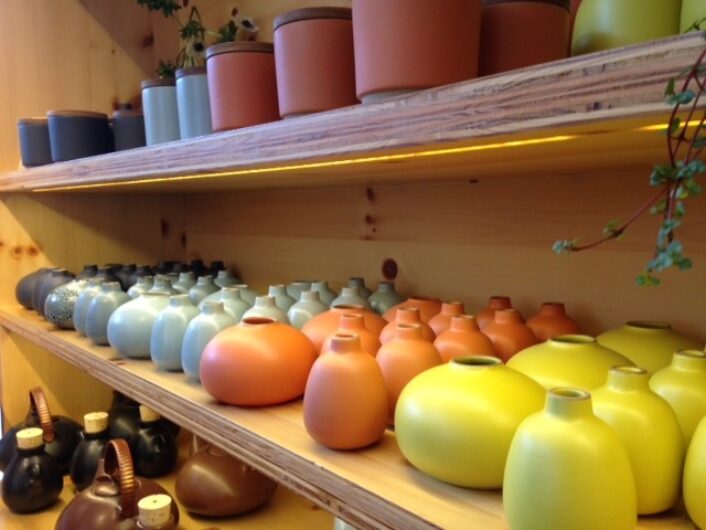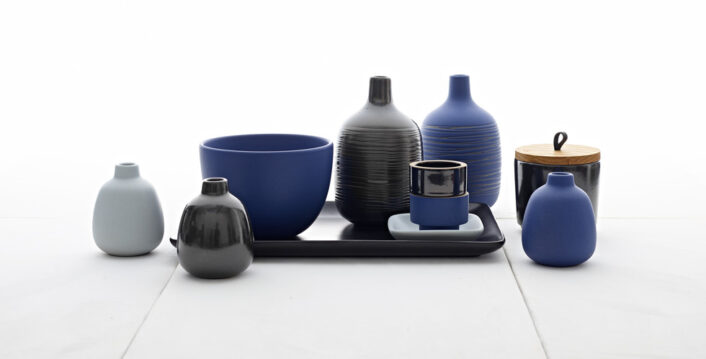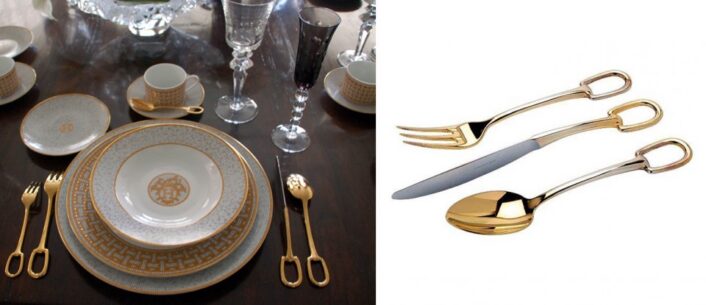Design
Heritage flatware
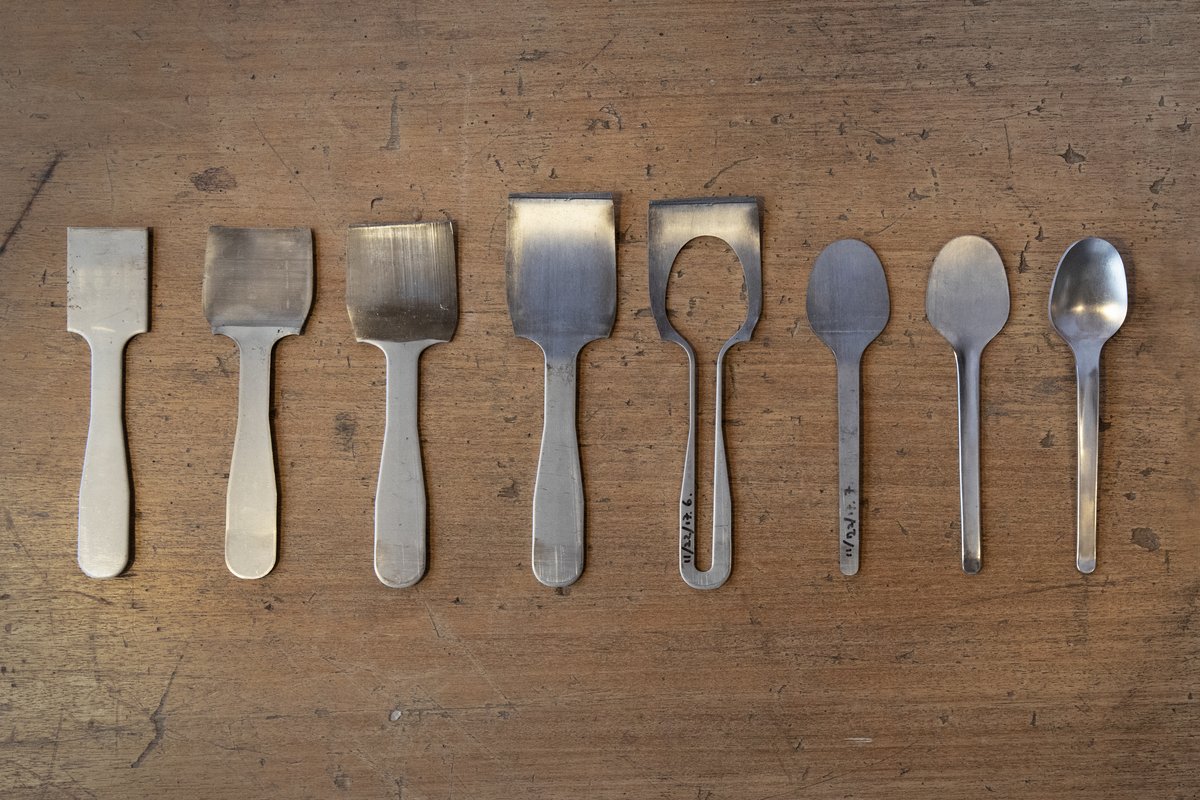
Pieces from the Muir Collection.
Image courtesy of: Heath Ceramics
When the prominent Heath Ceramics decided it wanted to offer a flatware line; naturally they turned to Sherrill Manufacturing. The 100% American manufacturer of ceramics wanted a partner that had the same values they held. It didn’t hurt matters that they are the last remaining flatware manufacturer in the U.S.
Heath Ceramics co-owner, Robin Petravic said of Sherrill, “We have a deep affinity for companies with heritage and for those remaining when all others have gone elsewhere.”
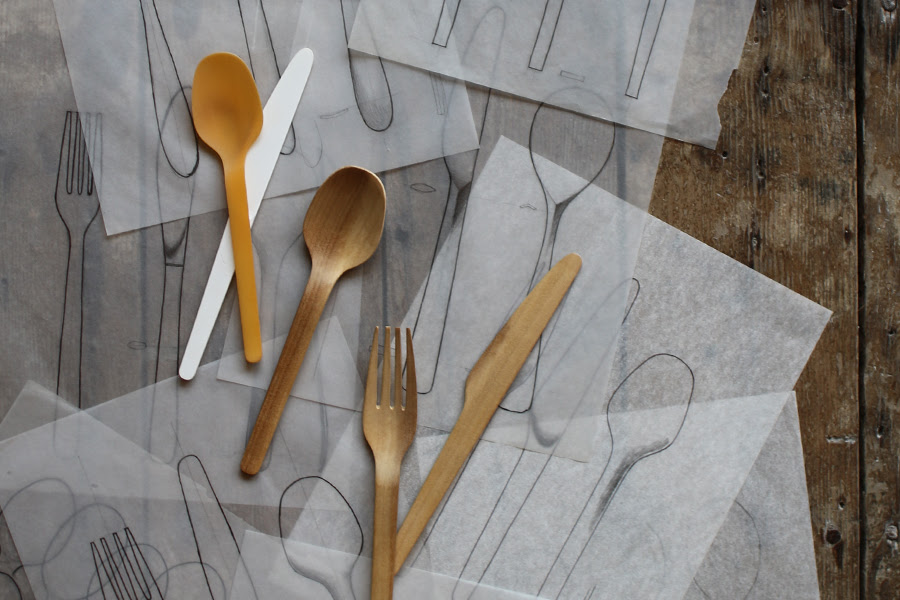
Initial sketches by Heath Studio Director, Tung Chiang were first carved into wooden models. Following these sample designs, Sherrill reproduced the pieces in metal.
Image courtesy of: Simple, Quiet, Modern
With a 3,000 mile distance between the two companies, Heath Ceramics and Sherrill Manufacturing were committed to working together to create the Muir Collection. Muir is the first of three flatware designs that will debut in 2019. The collection includes two spoons, two forks, and a knife in a design meant to honor American craftsmanship. The pieces feature smooth edges, elegant lines, and a sturdy grip.
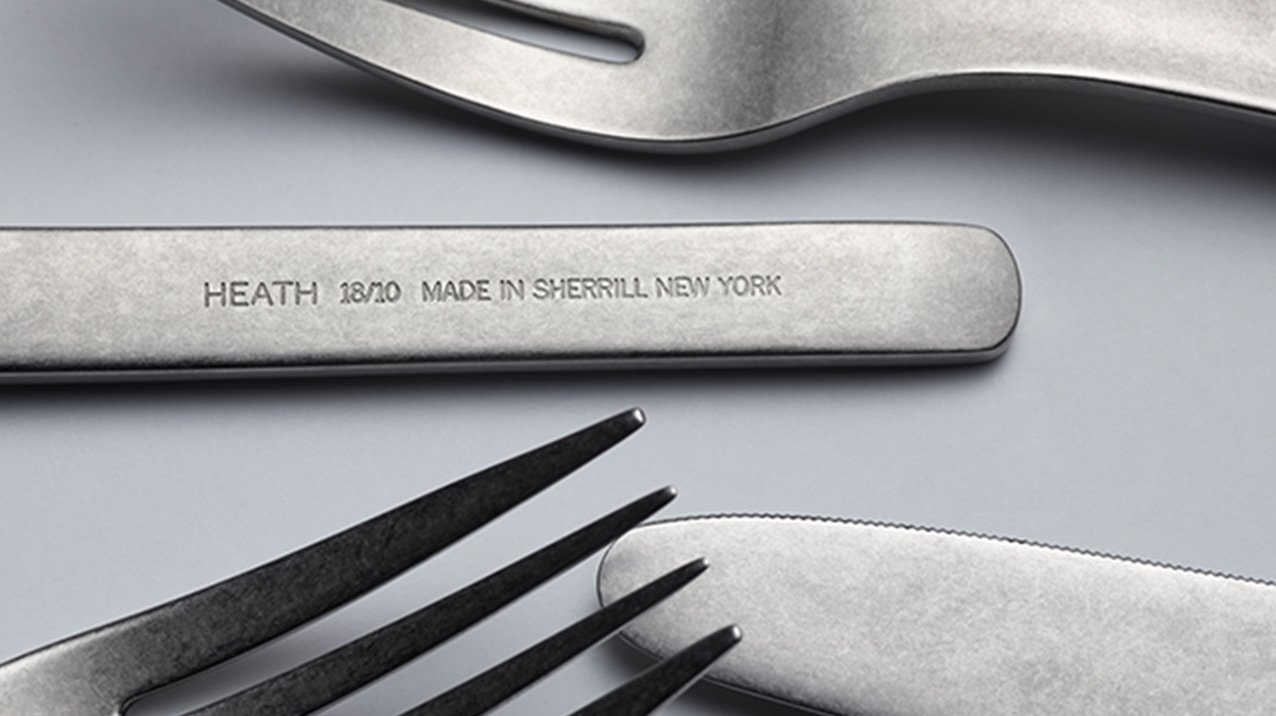
The Sherrill Manufacturing plant is in upstate New York inside the former Oneida facility. Inside this building, silverware has been produced since the 1800s.
Image courtesy of: Simple, Quiet, Modern
While visiting the Sherrill Manufacturing plant, Heath personnel noticed many similarities to their Sausalito factory. Each company has an enormous commitment to craft, original machinery which works WITH and not INSTEAD OF the hand, and an established tradition of skill which carries out a 15-25 step process (that goes into making one piece of flatware).
Furthermore, there is the significance of one special tool, an internally-built tumbling mechanism, which offers a distinct matte finish to the pieces.
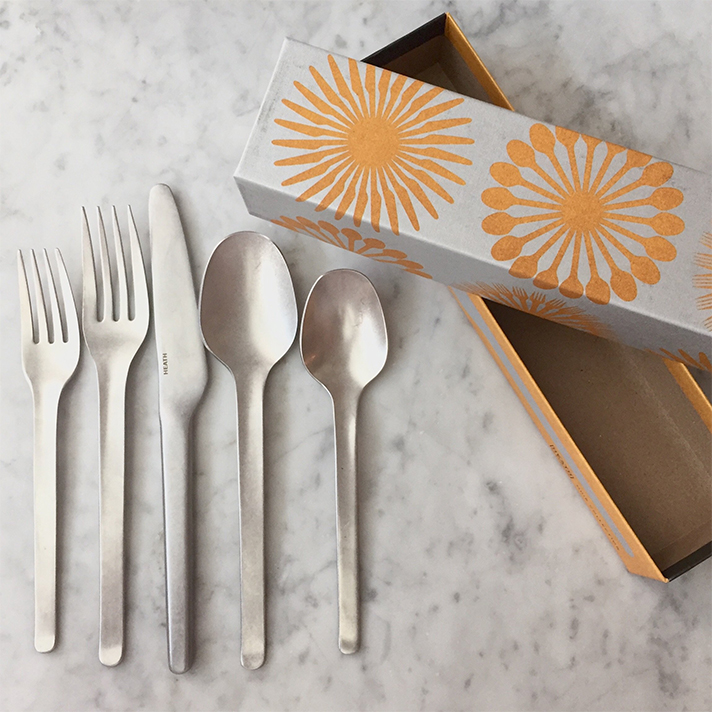
A place setting box designed by House Industries.
Image courtesy of: Los Poblanos Farm Shop
It took two years of research and trial-and-error to come up with this design. Sketches were drawn and prototypes with paper, clay, wood, and metal were produced. It was important to physically feel the pieces to ensure that they had the desired weight.
Each utensil goes through multiple stages as it’s transformed from a piece of steel into an object that fits well in any hand. As the finishing touch, the packaging is designed by House Industries. The Delaware company has a knack of presenting the object in the perfect way.

Image courtesy of: Heath Ceramics
When deciding upon a design for their flatware collection, Heath wanted to compliment Edith Heath’s original dinnerware design, “Coupe”. The end product beautifully compliments its predecessor and is yet another nod to an enduring and everlasting legacy that Heath hopes to present.
